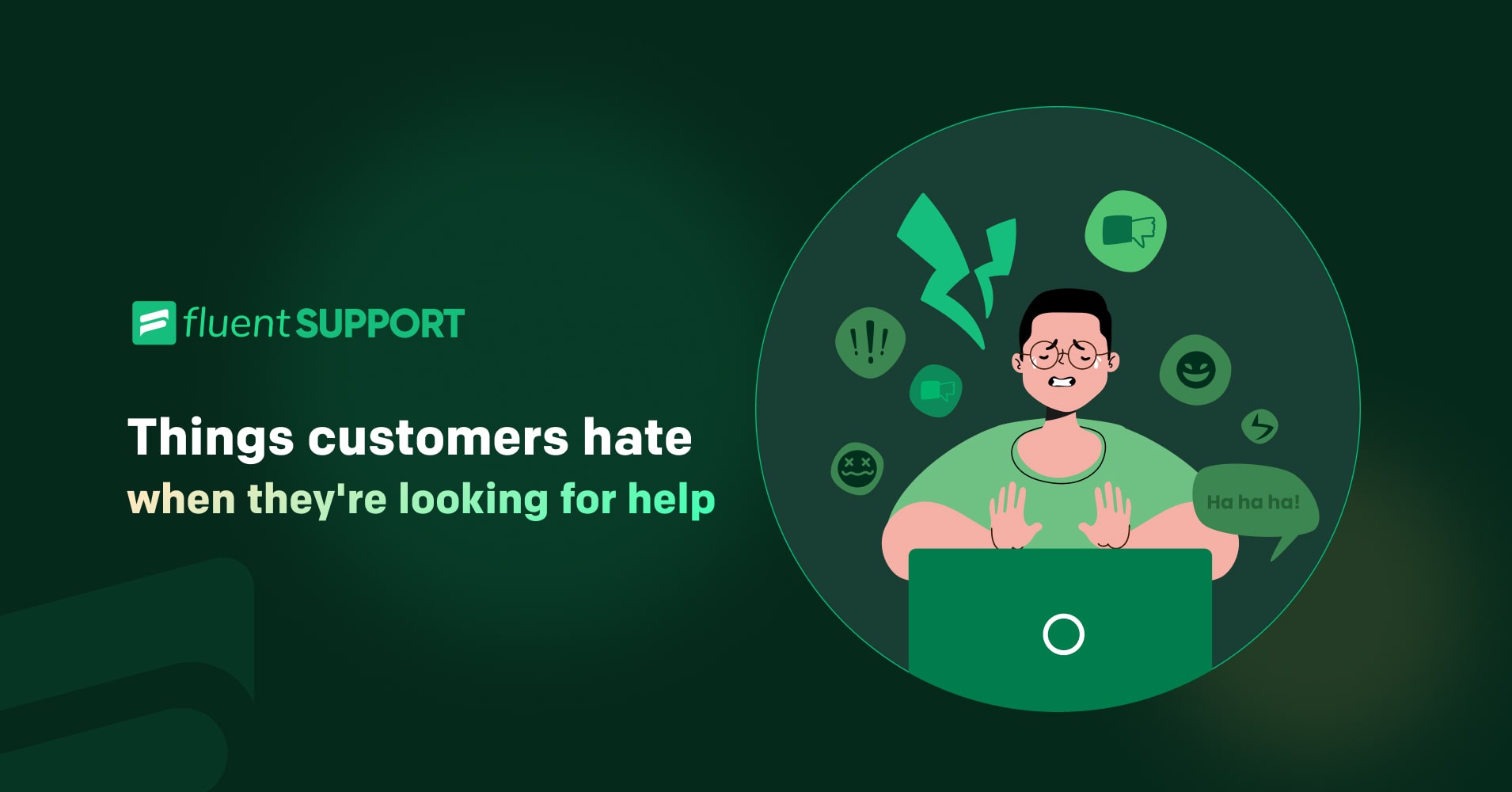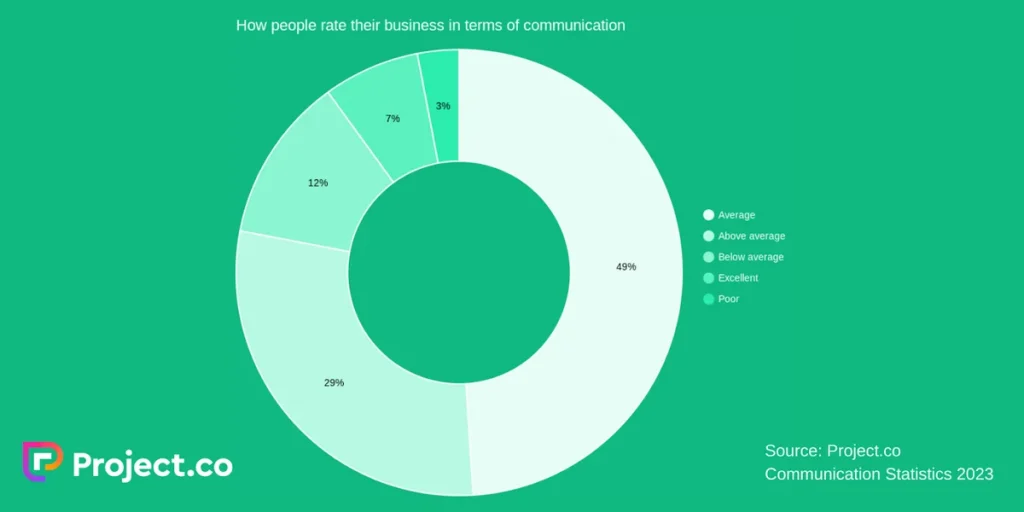
7 Things Customers Hate While Seeking Help: Try Avoiding Them
By Uttam Kumar Dash
November 28, 2023
Last Modified: January 6, 2026
Ever felt lost trying hard to do the right thing for your customer, but ended up with a bad review? Wondered why that happens and how to avoid that?
Most often, it boils down to matters concerning your customer service. There are certain things customers hate while they’re looking for help.
So, let’s dive straight into those 7 deadly sins that we think are the most crucial to avoid and tackle as a business.
What customers hate?
Understanding customer expectations is the first step to exceptional service. Customers demand efficient service, timely responses, and promises fulfilled.
If a business can meet these fundamental expectations just right customers are happy to continue buying. Even they are willing to pay more for a superior experience in the future. This pulls substantial growth for your business.
“Customer-centric brands report profits that are 60 percent higher than those that fail to focus on CX.” – CX Index
However, failing to meet these expectations breeds dissatisfaction. Consumer psychology tells us that unmet expectations not only disappoint but can create lasting negative perceptions.
Thus, businesses must fulfill customer expectations to foster customer loyalty and avoid the pitfalls of dissatisfaction.
7 things that customers hate the most
Here’s a brief list of things customers hate when seeking help from your service team. Additionally, we have included some solutions to resolve these issues at the end of each point.
1. Limited access to live customer support
“67% of customers end a call in frustration when they cannot reach a customer service representative.” – Glance
Experiencing frustration when trying to reach customer support is a common issue. From enduring long waits on hold to dealing with automated systems, the struggle is real.
Even when Live Chat was introduced as a solution, it couldn’t help much. Poor user experiences, disconnections, and delays in response contribute to customer dissatisfaction.
Solution:
- Invest in advanced call routing systems for quicker connections.
- Optimize Live Chat platforms for prompt responses.
- Regularly update automated systems to provide accurate information.
2. Late responses and slow resolution of issues
Customer service serves as a direct reflection of your product. Delays in customer service affect customer satisfaction significantly. Thus, it has the potential to damage your brand’s reputation.
Studies show that,
“Customers expect quick replies, with 62% expecting responses within an hour. When responses are slow, customer satisfaction drops; a mere 5-minute delay can lead to a 400% decrease in qualification rates.” – Timetoreply
So, we can consider the response time, which is the interval from customer contact to team reply as a crucial metric for business success. The more we can reduce that time gap with a solid resolution, the better.
Solution:
- Keep customers informed about delays and assure commitment to resolving concerns.
- Use affordable tools for acknowledgment emails and categorizing queries.
- Invest in more tools for complete insights. Identify areas for improvement.
- Use Time To Resolution (TTR or MTTR) as a measurable metric for overall efficiency improvement.
- Set realistic response time benchmarks.
3. Poor communication, breaking promises, and not getting an apology

While 99% of consumers seek good business communication, only 7% of businesses rate theirs as “excellent,” with over double considering it “below average” or “poor.”- Communication Statistics 2023 by Project.co
So, you see, 99% of consumers expect excellent communication from businesses. They expect apologies for mistakes and want promises to be kept. Yet most of us fall short of those.
Do you know why?
In most cases, this gap is caused by limited resources, under-skilled agents, lack of a quality SLA or No SLA, unapologetic behaviors, and outdated tools.
Solution:
- Provide thorough training programs to enhance agent skills in both behavioral and technical aspects.
- Optimize your human resource allocation. Try different Technical Support Models for ease.
- Update and modernize tools and technologies regularly.
- Implement a robust SLA with clear performance metrics.
4. Frequent redirects and transfers in customer service
Customers find it frustrating to repeat themselves and get transferred between different agents or departments for assistance. This not only worsens their dissatisfaction but also wastes their time.
Customers prefer a smooth journey, where their information is organized through journey mapping.
This stat below highlights how improper redirections can frustrate customers,
“33% of customers are frustrated when they have to repeat themselves to different customer support representatives.” – Tidio
Solution:
- Train agents to precisely transfer the calls or support tickets to the right agent.
- Do your groundwork and implement an automated system for redirecting calls or support tickets in the correct formation.
- Strive to resolve issues on the first call or opening ticket.
5. Hearing about policies and procedures
“Sorry, that’s outside of our policy.”
Encountering replies like that due to policies or procedures is really uncomfortable for any customer. So, instead of directly expressing limitations, it’s important to present the information in a customer-centric approach.
- Communicate limitations tactfully. Focus on helping rather than limits.
- Offer alternative solutions within policy boundaries.
- Clearly explain the restrictions without using policy jargon.
- Prioritize customer assistance within established guidelines.
Here’s an example,
Avoid simply saying, “Sorry, it’s against our policy.” Instead, offer a detailed explanation such as, “Regrettably, I can’t process a refund beyond our three-month policy period. However, I’m pleased to provide you with a credit to your account as an alternative solution.”
This approach maintains transparency and explains the situation. Moreover, it focuses on assisting the customer within the established boundaries. And, probably this approach is less likely to make your customer angry. Right?
6. Unreliable customer service related tools
Unreliable customer service related tools often create a bottleneck in customer support. Imagine a customer-facing dropped call, delayed or broken response. This will surely lead to frustration and a negative experience.
And, not only customers but businesses might also face multiple challenges in delivering optimal support,
- Obtaining accurate data reports can be a hurdle.
- Suboptimal user experiences may result from poor UI design of the agent’s dashboard.
- Agents might find it hard or confusing to navigate such outdated or unreliable tools.
Solution:
- Choose advanced tools for seamless customer service. Examples: Fluent Support, Fluent Forms, Fluent Booking, FluentSMTP, etc.
- Stay tech-savvy. Look out for best practices for better customer service.
7. Lack of customer empathy
“21.3% of customers prioritize empathy in support teams. Another 31.8% express a desire for enhanced responsiveness and understanding.” – Hiver Research
Customer service often falters when businesses neglect to put themselves in their customers’ shoes.
This lack of empathy arises when customer queries are seen as routine tasks by agents. We often tend to neglect the distinctive nature of each situation.
Sometimes many service representatives find it challenging to relate to customers due to their daily exposure to problem-solving. This is understandable.
However, to remedy this, service providers need to recall their own experiences with subpar products or services. And, only by reflecting on these encounters, they can better understand and empathize with the customer’s perspective.
Solution:
- Encourage a customer-centric culture. Take the company called Zappos as a notable example.
- Provide continuous training to instill empathy. Try to grasp diverse customer perspectives deeply.
- Actively listen to customer feedback through various channels, including surveys.
- Develop a robust complaint resolution process. Emphasize acknowledgment and collaborative solutions.
Help your customers better
Finally, make sure to ensure a clear path for customers no matter what. This allows them to navigate effortlessly toward their needs. Also, it benefits both parties in the long run.
The core takeaway is clear: There are certain things customers hate when they’re seeking help and to resolve those ASAP is the best thing to do.
Therefore, prioritize a customer-centric approach for greater customer retention and long-term success. Ensure that each interaction is positive by focusing on the customer’s journey.
Powered by Fluent Forms
Start off with a powerful ticketing system that delivers smooth collaboration right out of the box.












Leave a Reply